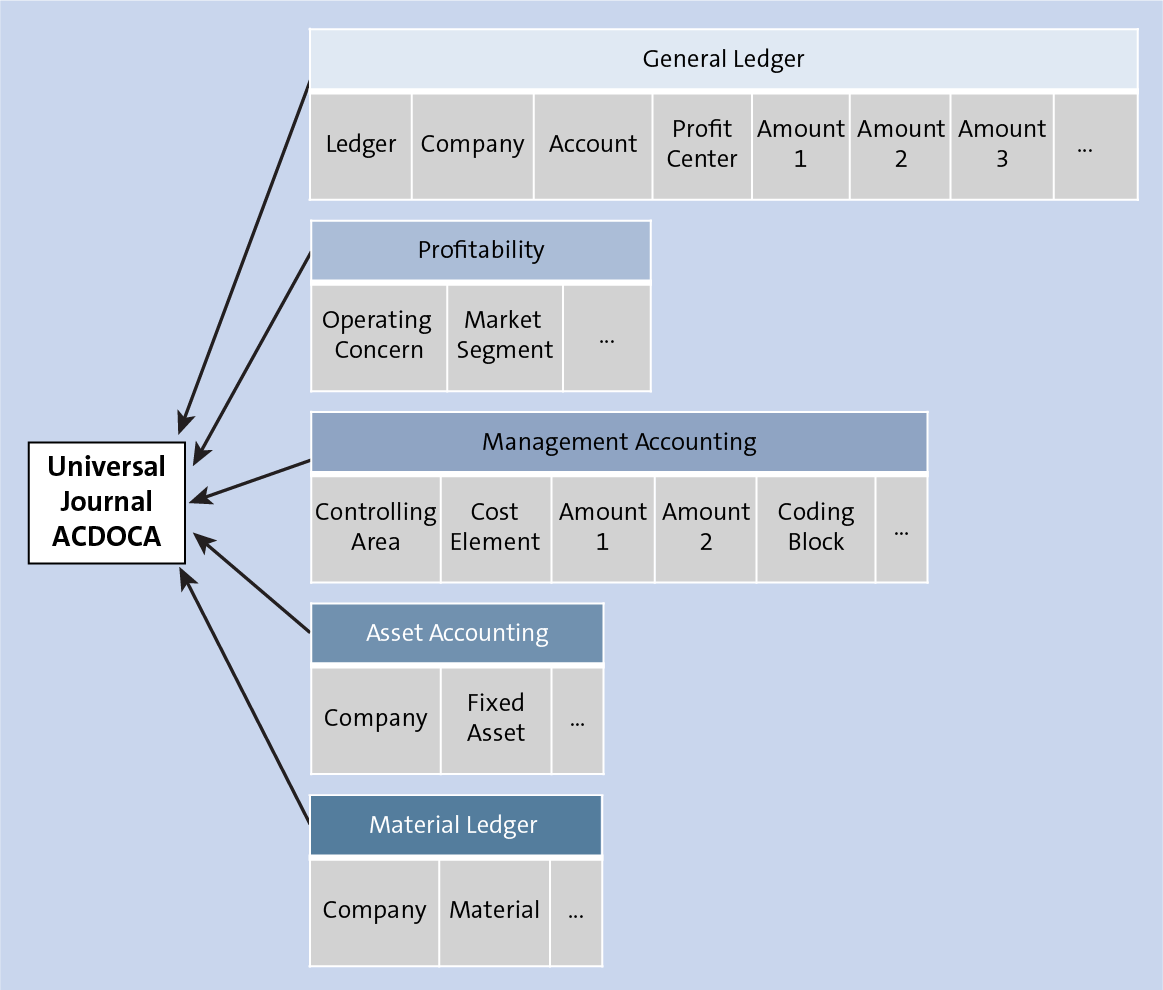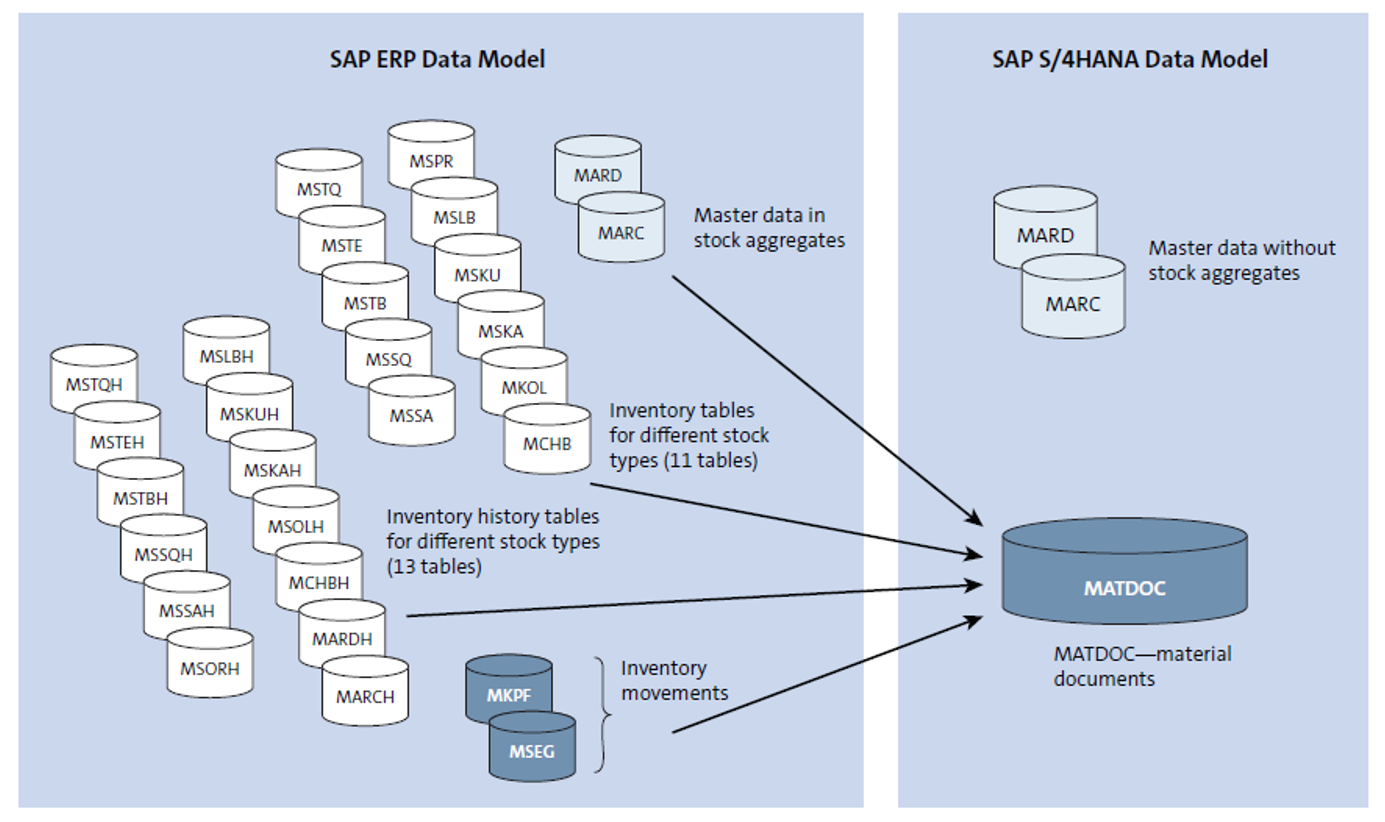

SAP S/4HANA is SAP’s current enterprise application suite. First released in 2015, the platform is considered the biggest change to SAP’s core offerings since the introduction of the R/3 system in 1992. It is made up of a number of lines of business that focus on different areas of an enterprise, such as finance, logistics, sales, R&D, and HR.
SAP S/4HANA was originally released as a next-generation financial solution at the 2014 SAPPHIRE NOW technology conference in Orlando, Florida, under the name SAP Simple Finance. Nine months later, SAP announced that it was expanding the core of the solution to become a full-scale enterprise resource planning platform, and named the suite SAP S/4HANA, with specific core lines of business tacked on to the end of the suite name (i.e., SAP S/4HANA Finance).
In 2016, logistics functionality was introduced to SAP S/4HANA in four key areas: sourcing and procurement, manufacturing, supply chain, and asset management. Major enhancements over SAP ERP included embedding extended warehouse management (EWM) and production planning/detailed scheduling (PP-DS) functionality directly into SAP S/4HANA.

SAP added machine learning capabilities to the suite in 2017 in order to perform easier goods and invoice receipt reconciliation and to automate invoice assignments. In September of that year, transportation management functionality was embedded in SAP S/4HANA. In 2018, predictive accounting functionality was added, and subsequent releases of the solution included additional intelligent technology enhancements in the areas of artificial intelligence, blockchain, and the Internet of Things.
As of 2021, an embedded human resources line of business is in development, and SAP has released multiple industry-specific offerings of SAP S/4HANA: energy and natural resources, service industries, consumer industries, discrete industries, financial services, and public services.
SAP S/4HANA brought about many innovations over its older sibling. Key changes included the development of a brand-new code base; utilization of SAP HANA’s in-memory computing architecture, providing the ability to access real-time business statistics and analytics; and the convergence of transactional and analytical systems.
New functionality like the Universal Journal allowed financials users to access a single source of financial truth where both financial and management accounting documents were stored. This led to better reporting, easier access to KPIs utilized by managers, and cockpits tailored to specific end users to help them make more informed decisions. SAP Fiori applications were introduced to provide a better user experience for employees, giving them greater insight into operations and business data in ways that existing T-codes could not.
With the proliferation of intelligent technologies such as machine learning and process automation, enhanced business processes such as predictive accounting were added to the solution as soon as functionality was fleshed out.
While SAP provided lots of brand-new functionality to SAP S/4HANA, it also went about improving areas in the existing SAP ERP suite as well as previous releases of SAP S/4HANA. These enhancements are discussed in each SAP S/4HANA release’s “simplification list,” which is a long (often 1,000+ page) document that explains what was enhanced and how it is a better option for users over previous functionality.
SAP S/4HANA has reorganized core modules found in SAP ERP into what it calls lines of business (LoBs). Current or planned LoBs are discussed below.
The SAP S/4HANA Finance LoB focuses on all money-related activities of a business. This includes financial accounting, controlling, treasury and risk management, financial planning, financial close, and consolidation. Learn more about SAP S/4HANA Finance here.

This collection of modules that make up the SAP S/4HANA logistics LoBs contains supplier relationship management and supply chain management solutions previously found in the SAP Business Suite. This was done purposefully by SAP to better distribute functionality and place similar processes together. Learn more about SAP S/4HANA’s logistics capabilities here.
The SAP S/4HANA Sourcing and Procurement LoB focuses on the activities surrounding the obtainment of raw materials needed to fulfill orders. This includes extended procurement, operational purchasing, and supplier and contract management.
The SAP S/4HANA Manufacturing LoB focuses on the product creation process. This includes responsive manufacturing, production operations, scheduling and delivery planning, and quality management.
The SAP S/4HANA Supply Chain LoB focuses on overall business planning activities, from pre-planning production runs to dispatching products to purchasers. This includes production planning, batch traceability, warehousing, inventory, and transportation management.

The SAP S/4HANA Asset Management LoB focuses on the maintenance of a business’ fixed assets, from tools and machinery all the way up to buildings. This includes plant maintenance and EHS monitoring.
The SAP S/4HANA Sales LoB focuses on the activities associated with fulfilling sales orders. This includes pricing, sales inquiries and quotes, sales contracts and agreements, free-of-charge orders, available-to-promise checks, incompletion checks, repair orders, individual requirements, return authorizations, credit and debit memo requests, picking and packing, billing, and revenue recognition.
The SAP S/4HANA R&D LoB focuses on the lifecycle of a product. This includes defining the product structure and bill of materials, product lifecycle costing, managing portfolios and projects, managing innovation, managing chemical data and other sensitive materials used in development, and staying compliant with safety and health regulations.
SAP Human Capital Management for S/4HANA was released in 2022 and provides HCM functionality in the new suite. There is no plan to further update this line of business with new functionality. SAP recommends integrating SAP S/4HANA with SAP SuccessFactors for cloud-based HR.
There are multiple avenues through which SAP S/4HANA can be deployed. Here’s a brief overview of each.
An SAP S/4HANA on-premise deployment encompasses traditional in-house IT infrastructure models. This deployment model describes an instance of SAP S/4HANA that is physically hosted on customer property. Customers can choose from a system conversion (brownfield) implementation, which takes an existing SAP environment and transforms it into SAP S/4HANA; a new (greenfield) implementation, which migrates existing business data into a brand-new SAP S/4HANA system; or selective data transition, which uses shell conversion to reuse existing ERP processes in the new system.

There are multiple cloud options for SAP S/4HANA deployment, all of which involve the use of external cloud integration.
A hybrid SAP S/4HANA instance provides a combination of both on-premise and cloud deployments. This may be done for a number of reasons, including testing the feasibility of both instances or hosting an on-premise deployment at headquarters while utilizing a cloud deployment in a satellite office.
SAP S/4HANA receives multiple updates a year. Cloud-deployed instances receive quarterly updates, while on-premise deployments are updated once a year, usually in September.
The naming conventions for SAP S/4HANA releases follow a four-digit year/month format. For example, the 2102 release of SAP S/4HANA Cloud refers to the release that came out in the year 2021 (21) in the month of February (02).
In addition to the information laid out above, there are a handful of important terms you should also know:
An option for customers running SAP ERP or other third-party ERP systems to realize the benefits of SAP S/4HANA Finance without undertaking a disruptive migration project. Learn more about Central Finance here.
Functionality that is directly written into the code of an SAP solution, such as the extended warehouse management functionality written into SAP S/4HANA.
An implementation methodology used by companies for SAP projects; often used for an SAP S/4HANA implementation. Learn more about SAP Activate here.
A cloud-based planning, analytics, and predictive solution that integrates with SAP S/4HANA to enable users to view and analyze historical financial data. Learn more about SAP Analytics Cloud here.
A set of preconfigured content that helps businesses quickly and easily set up a solution such as SAP S/4HANA.
A platform-as-a-service offering focused on the intelligent enterprise. Learn more about SAP BTP here.
An updated version of SAP BW that includes multiple new data warehousing features and runs on the SAP HANA database. Learn more about SAP BW/4HANA here.
SAP’s flagship customer relationship management (CRM) solution and successor to SAP CRM. It was once known as SAP C/4HANA.
Here are answers to some of the most common things SAP learners and implementers want to know.
Q: Is SAP S/4HANA replacing SAP ECC?
A: Yes. SAP S/4HANA is the successor to SAP ERP (also known as SAP ECC). SAP announced it would stop supporting SAP ECC by 2027, making SAP S/4HANA the go-forward solution for enterprise resource planning. You can learn more how SAP ECC and SAP S/4HANA compare by reading this post.
Q: How long does it take to implement SAP S/4HANA?
A: Implementation time can vary depending on factors like system complexity, deployment method, and business requirements. While exact timelines aren’t provided in this article, options like brownfield, greenfield, or selective data transition each carry different time investments.
Q: When should we begin our SAP S/4HANA migration? Now or closer to 2027?
A: SAP will support SAP ERP up to 2027. In addition, SAP announced that new functionality will only be made available on SAP S/4HANA. As such, many companies will choose to convert much sooner. If I’m not mistaking, SAP ERP was released back in 2005. The question you should ask yourself, do you want to be on a software which was released 15 years ago? If you want to make use of new functionalities and innovations, I think not. (Thanks to Bert Vanstechelman for this answer!)
Q: What’s the difference between cloud and on-premise?
A: An on-premise deployment means the system is hosted and maintained in-house. SAP S/4HANA Cloud offers a standardized solution hosted externally, with multiple cloud flavors including public cloud and private cloud. A hybrid model combines both approaches for flexibility.
Q: What are SAP S/4HANA lines of business (LoBs)?
A: LoBs in SAP S/4HANA are reorganized groupings of modules from SAP ECC. These include areas like Finance, Sales, Procurement, Manufacturing, and Supply Chain, providing tailored tools for different parts of a business. Learn more in the modules section here.
Q: What is the simplification list in SAP S/4HANA?
A: The simplification list is a document SAP provides with each release. It outlines technical and functional changes compared to older systems, often explaining what was removed or enhanced and why.
Q: Do you need an SAP S/4HANA license to do a readiness check and other preparational tasks prior to an implementation?
A: An SAP S/4HANA license is not needed to use the verification tools such as the readiness check, simplification check, and the custom code migration cockpit. The custom code migration cockpit needs to be deployed on an SAP S/4HANA system, which needs to be available in your environment. If none is available, you can use one from the SAP Cloud Appliance Library or use Custom Code Migration from SAP BTP if you have a subscription. (Thanks to Mark Mergaerts, Bert Vanstechelman, and Nick Mahieu for this answer!)
Want to learn more about SAP S/4HANA? Additional information can be found in the blog posts and books listed below.
Learn more SAP from our official Learning Center.
And to continue learning even more about SAP S/4HANA, sign up for our weekly blog recap here: